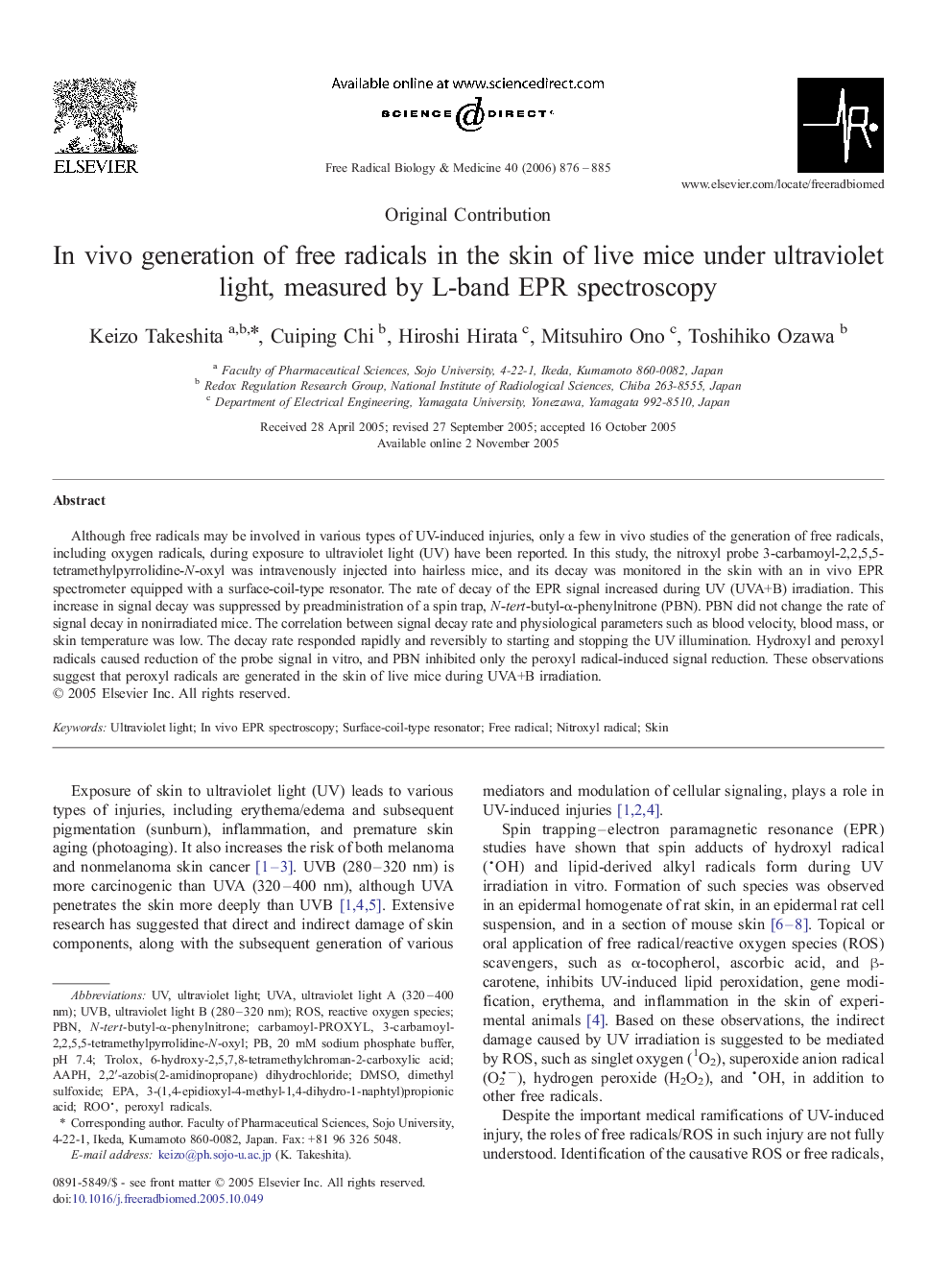| Article ID | Journal | Published Year | Pages | File Type |
|---|---|---|---|---|
| 1911545 | Free Radical Biology and Medicine | 2006 | 10 Pages |
Although free radicals may be involved in various types of UV-induced injuries, only a few in vivo studies of the generation of free radicals, including oxygen radicals, during exposure to ultraviolet light (UV) have been reported. In this study, the nitroxyl probe 3-carbamoyl-2,2,5,5-tetramethylpyrrolidine-N-oxyl was intravenously injected into hairless mice, and its decay was monitored in the skin with an in vivo EPR spectrometer equipped with a surface-coil-type resonator. The rate of decay of the EPR signal increased during UV (UVA+B) irradiation. This increase in signal decay was suppressed by preadministration of a spin trap, N-tert-butyl-α-phenylnitrone (PBN). PBN did not change the rate of signal decay in nonirradiated mice. The correlation between signal decay rate and physiological parameters such as blood velocity, blood mass, or skin temperature was low. The decay rate responded rapidly and reversibly to starting and stopping the UV illumination. Hydroxyl and peroxyl radicals caused reduction of the probe signal in vitro, and PBN inhibited only the peroxyl radical-induced signal reduction. These observations suggest that peroxyl radicals are generated in the skin of live mice during UVA+B irradiation.
